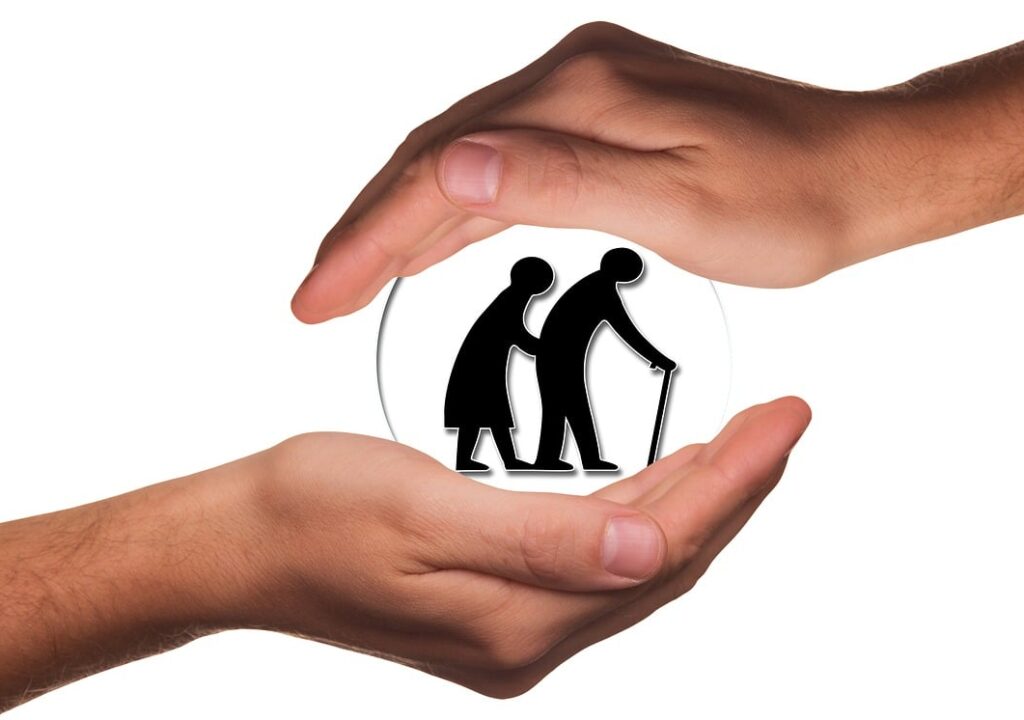
Elderly abuse is a problem existing both at home settings as well as in care facilities. As the population is aging, more and more people are living at home with assistance of either their family members or from health care providers or both. Awareness and research about elderly abuse needs to be increased to make sure safe care in all care settings.
Authors: Felex Amandus, Angellah Nakyambadde & Sini Hämäläinen
What is elderly abuse?
Elderly abuse is a problem existing both at home settings as well as in care facilities. According to WHO (2023), it is an intentional or unintentional act, or failure to act, by a caregiver or another individual in relation with expectation of trust of care that causes injury to an adult 60 years of age or older. It has severe negative effects on the victims’ health, relationships, and quality of life, as well as the community in which they reside. Moreover, figures indicate that the prevalence rate worldwide was 15.7%, making it a significant public health issue. This percentage, which is almost one in six among older persons, is seen to be too large to be ignored. (Myhre et al. 2020)
Elderly abuse is described as any insufficient response, one-time or repetitive behavior occurring in a relationship based on trust that upsets or harms an elderly person (Myhre et al. 2020). Still, according to Amandus & Nakyambadde (2023), research data on elderly abuse is scarce and the issue has not been properly addressed although according to the Finnish Ministry of Social Affairs and Health and the WHO it causes psychological harm, physical injury, damage, or death to the elderly individuals. Elderly abuse can exist in all relationships of trust between older adults and caregivers in different forms, such as physical, psychological, or sexual abuse, neglect and material exploitation. Even though elderly abuse typically falls under one or more of these categories, studies show that cultural differences in the circumstances and contexts of the abuse have an impact on the type and nature of the abuse. (Yon et al. 2019; Sousa et.al. 2021)
A concern of elderly abuse happening in care facilities is raised as it is where the most vulnerable older adults reside. According to the results 20% of nursing home inmates have been victimized by maltreatment committed by another inhabitant or a health care worker in the facility. Bumps, broken bones, or burns are a few notable early warning symptoms as well as depression or changes in the activities the elderly engage in can be signs of abuse caused by other inhabitants or family members. Poor cleanliness or bedsores on the other hand can be signs of maltreatment by health care staff members.
How can elderly abuse be prevented?
Elderly abuse is a serious problem but can be prevented by all of us. Understanding and addressing the variables that expose people to violence or shield them from it is necessary to avoid abuse. This can be done by raising awareness, sharing information and informing authorities about any abuse or suspected abuse. Other ways of preventing abuse are for instance checking in with elderly people who may not have many friends or family, giving support to overworked carers in home settings, organizing help through organizations or activities such as adult day care programs and counselling. It is the responsibility of a nurse to make sure that nursing home residents receive quality care which is free from abuse. Furthermore, to be able to prevent elderly abuse staff, residents and the management need to be educated on the types, causes and risk factors of elder abuse, poor working conditions should be made better, provide sufficient supplies, offer good leadership, a proper scheduling and clear work descriptions for staff. (Band- Winterstein 2015; Yon et.al. 2019; Amandus & Nakyambadde 2023)
More awareness and research about elderly abuse is needed
It is very important to pay attention to elderly abuse more as the population is getting older and more care is provided at home settings. Therefore, more research is needed on the issue, especially focusing on gender differences, the health effects of the elderly who are abused and cultural aspects of mistreatment and abuse. Elderly abuse in care facilities is a complicated and alarming problem with wide-ranging effects on elderly individual health and safety. Elderly abuse is a public health issue which needs to be addressed. Additionally, the extent and varieties of the abuse in care facilities need to be acknowledged as well as the causes, risk factors, prevention and intervention tactics of abuse. A multidimensional strategy is needed to deal with this issue, including better education, greater public understanding, better legal protections policies, better care guidelines and continual analysis to produce alternatives that are supported by the available data. As the population is aging worldwide, it is crucial that the elderly and their overall safety and well-being are seen as a priority in governmental level as well as in the society.
References
Amandus, F.& Nakyambadde, A. 2023. Elderly Abuse in Health Care Facilities – A Descriptive Literature Review. Bachelor’s thesis. LAB University of Applied Sciences. Cited 12.12.2023. Available at https://urn.fi/URN:NBN:fi:amk-2023102327840
Band-Winterstein, T. 2015. ‘Health care provision for older persons: The interplay between ageism and elder neglect’. Journal of Applied Gerontology. Vol. 34(3), NP113–NP127. Cited 12.12.2023. Available at https://doi.org/10.1177/0733464812475308
Myhre, J., Saga, S., Malmedal, W., Ostaszkiewicz, J., & Nakrem, S. 2020. Elder abuse and neglect: An overlooked patient safety issue. A focus group study of nursing home leaders’ perceptions of elder abuse and neglect. BMC Health Services Research. Vol. 20(1), 1–15. Cited 12.12.2023. Available at https://doi.org/10.1186/s12913-020-5047-4
Sousa, R. C. R. D., Araújo-Monteiro, G. K. N. D., Souto, R. Q., Santos, R. C. D., Leal, C. Q. A. M., & Nascimento, N. D. M. 2021. Interventions to prevent elder abuse in the community: a mixed-methods systematic review. Revista da Escola de Enfermagem da USP, 55.
Yon, Y., Ramiro-Gonzalez, M., Mikton, CR., Huber, M., Sethi, D. 2019. The prevalence of elder abuse in institutional settings: A systematic review and meta-analysis. European Journal of Public Health. Vol. 29(1), 58–67. Cited 12.12.2023. Available at https://doi.org/10.1093/eurpub/cky093
Authors
Felex Amandus and Angellah Nakyambadde are graduate nursing students from LAB University of Applied Sciences. They have done their bachelor’s thesis on elderly abuse in health care facilities.
Sini Hämäläinen works as a Senior Lecturer in LAB University of Applied Sciences.
Illustration: Senior Care for the Elderly. https://pixabay.com/illustrations/seniors-care-for-the-elderly-1505935 (Pixabay License)
Published 13.12.2023
Reference to this article
Amandus, F., Nakyambadde, A. & Hämäläinen, S. 2023. Elderly Abuse – A quiet but existing problem in health care. LAB Pro. Cited and the date of citation. Available at https://www.labopen.fi/en/lab-pro/elderly-abuse-a-quiet-but-existing-problem-in-health-care/






